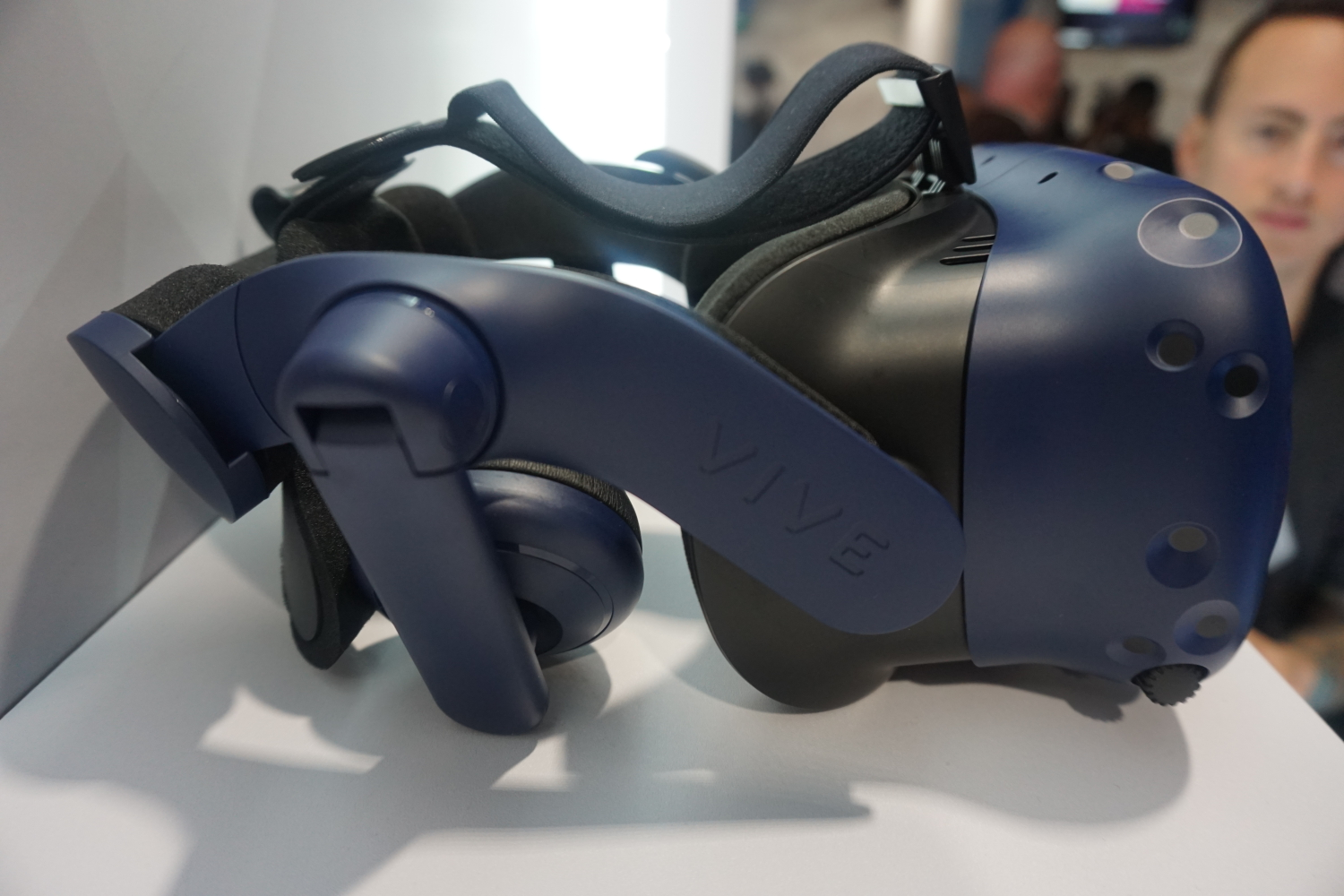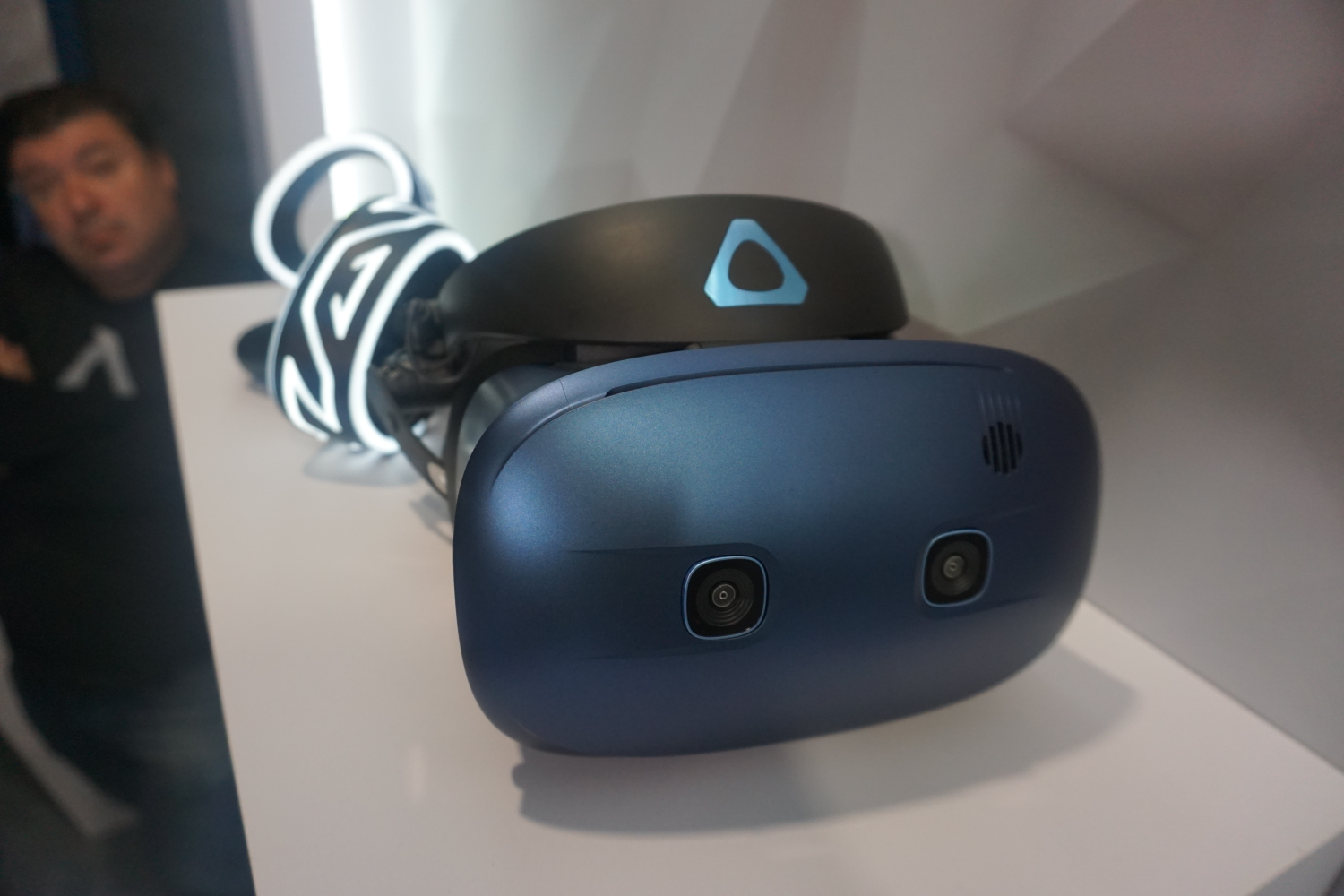HTC Vive Cosmos Will Have Greater Resolution Than the Vive Pro (Update)
Update 6/25/2019, 5:00 p.m. ET: HTC Vive disclosed new information today about its next consumer VR headset, the HTC Vive Cosmos.
Upon release, the Vive Cosmos will have a higher total resolution than any other Vive headset. The LCD display will have a 2880 x 1700 combined resolution, which is 88% bigger than the original HTC Vive headset.
According to HTC, VR games will play at up to 90 frames per second with a “reduced” screen-door effect. HTC Vive is banking on ithe HMD’s RGB panels with subpixels to help with image clarity. For example, both the HP Reverb, Oculus RIft S and upcoming Valve Index also opt for RGB subpixels (meaning each pixel gets a red, green and blue subpixel) rather than OLED competitors’ PenTile layout, with just two subpixels per pixel.
Last week, HTC Vive also revealed that the Vive Cosmos will have 6 cameras for room-scale inside-out tracking (no base stations needed) and responsive controllers plus a flip-up design so you can see the real world without completely removing the headset. The Vive Cosmos will also arrive with a swappable faceplate for future XR applications and a vented front design for keeping you cool while VR gaming.
The company is still keeping quiet on the Vive Cosmos’ price and release date, but we’re expecting it to arrive in Q3.
Original article, 1/8/2019:
At its CES press conference, HTC Vive just announced two new VR headsets: the HTC Vive Cosmos and HTC Vive Pro Eye. The former targets consumers and is said to be more lightweight and portable while the latter adds some features for businesses.
Get Tom's Hardware's best news and in-depth reviews, straight to your inbox.
HTC Vive Cosmos
The Vive Cosmos is designed to make VR more accessible to the masses. HTC claims the headset will be easy to setup and more portable with a redesigned headstrap and lighter materials. There's also no external tracking required. Plus, it comes with a flip-up design, so you can swap between reality and virtual reality instantly.
The Vive Cosmos will be able to be powered by a gaming PC, but HTC hinted that a mobile version could be coming.
Vive Cosmos will come with the debut of Vive Reality System, which offers "core software experiences for a new age of spatial computing." The goal is to bring the power of spatial computing to a broad consumer audience and glue together HTC's hardware, software and services for seamless experience. And using its Mozilla partnership, it hopes to bring more web content to VR customers, including plans to launch the first Vive-dedicated VR browser.
HTC Vive Cosmos developer kits will arrive early this year, with general availability and pricing info to be revealed later in 2019.
HTC Vive Pro Eye



Update 1/8/2019, 8:11 a.m. ET: It was announced today that the integrated eye tracking in the upcoming HTC Vive Pro Eye will come from Tobii.
Following last year's introduction of the Vive Pro for business customers, HTC today unveiled the HTC Vive Pro Eye, a headset with integrated eye tracking. The vendor said this means businesses can build even better training programs. HTC is also claiming increased VR interaction speeds and more efficient CPU and GPU usage.
Eye tracking also brings foveated rendering, which increases quality in the portion of the images where your eye is actually looking. It'll use Nvidia's latest RTX cards to do so.
Partners for the HTC Vive Pro Eye already include the MLB, among others. It'll arrive in Q2.
HTC Viveport Infinity
On the services side, HTC announced Viveport Infinity, a long-term VR subscription service giving customers access to over 500 apps, including "top games" and educational apps, for a monthly fee.
Viveport Inifity launches April 5.
Stay tuned for our hands-on experiences with some of these offerings as we keep spending time with HTC Vive VR at CES.

Scharon Harding has over a decade of experience reporting on technology with a special affinity for gaming peripherals (especially monitors), laptops, and virtual reality. Previously, she covered business technology, including hardware, software, cyber security, cloud, and other IT happenings, at Channelnomics, with bylines at CRN UK.
-
Giroro "banking on ithe HMD’s RGB panels with subpixels to help with image clarity. "Reply
Yes! Thank you HTC! :D
